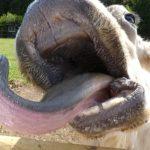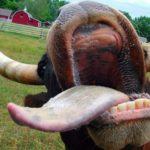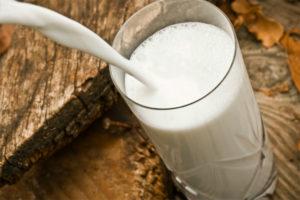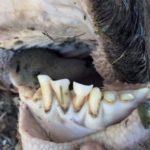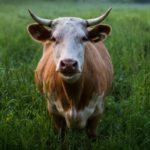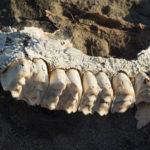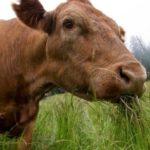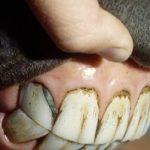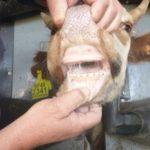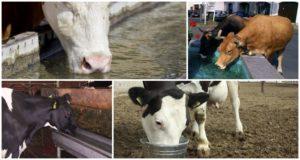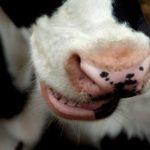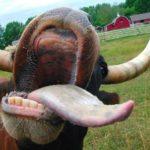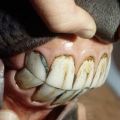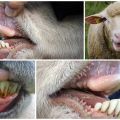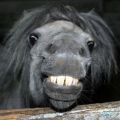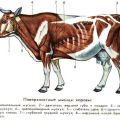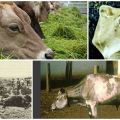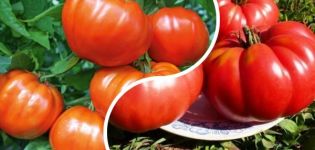Layout and dental formula of a cow, anatomy of the structure of the jaw of cattle
Cattle are ruminant artiodactyl mammals with a complex structure of the digestive tract. Due to the ability to consume large amounts of feed, the digestive tract of cattle must quickly digest food. For the body to assimilate nutrients from food, the teeth have a large load. According to the condition of the teeth of cows, one can not only determine the age, but also prevent the development of possible diseases and pathologies.
Jaw structure in cattle
The anatomy of the digestive tract of cloven-hoofed animals differs from other types of livestock. Due to the lack of sharp fangs and claws, livestock are easy prey for predators. Therefore, in the process of evolution, representatives of this animal species have formed a special way of eating. Cattle are first plucked, swallowed feed, after which they chew hay and grass in a calm atmosphere.
Important! Having an idea of the structure of the jaw in cattle, the features of the gastrointestinal tract, it is possible to prevent the development of many diseases, systemic failures, pathologies.
Cattle teeth are strong enamel organs. Lips, tongue, bone plate, and the secretion of the salivary glands take part in the capture, grinding, grinding of feed. Artiodactyls lack incisor teeth and canines. Their functions are taken over by a solid solid bone plate. Therefore, cows seem to be missing upper teeth. Cattle have developed jaw muscles. The lower jaw has more mobility; when chewing food, it moves only clockwise. The top remains motionless.
The teeth of cows are arranged in arcades. The jaw pattern in cattle includes:
- Incisors (incisor teeth). They grab feed, cut off grasses. Flat spatulate shape. They have slightly rounded edges, different sizes. Located in front of the lower jaw. The first two incisors (pair) are hooks. The middle ones are located on the right and left sides.
- Premolars, molars. Chop, chew food. Between the premolars and molars there is a toothless interalveolar margin, which is formed by the gum. 24 premolars and molars are located in three pairs on each arcade.
The dental formula is individual and can change throughout life. It is recorded by the veterinarian in the animal's branch card during the examination of the oral cavity. Each dental unit is indicated in the formula by a certain letter of the Latin alphabet:
- J - incisors;
- R - premolars;
- M - molars.
Quantitative indicators of dental units of the upper jaw are written in the numerators, and on the lower - in the denominator. If the tooth is missing, the number "0" is put. Letters, numerical values take a certain place in the formula. Systematic veterinary control is carried out over the teeth. The veterinarian examines, monitors the state of the oral cavity of ruminants from birth. All changes that are associated with the development, change, diseases of dental units are made in the individual branch cards of the animal. When diagnosing dental problems, pathology is indicated opposite the letter, numbers.
How to determine the age of a cow by teeth
The age of cattle is determined by the change in the condition of the incisors. With age, dental units are erased, the color of the enamel changes, the dentin becomes shorter and thinner. Calves are born with four to six incisors. Milk teeth are sharp at the ends, with a thin enamel. At a week of age, a calf should have 7-9 milk teeth. Edges are formed.
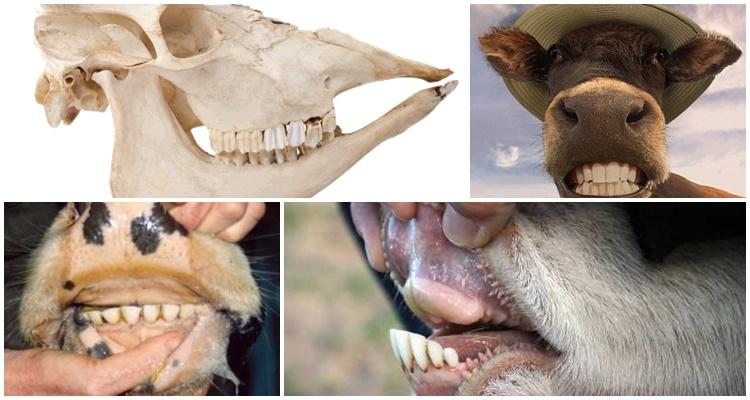
In a month, calves have three teeth on each jaw. In six months, the fourth molar is formed, the edges are fully developed.
Important! In calves, the incisors are constantly growing and become the same size by three months. The enamel on the incisors begins to wear off gradually after reaching the age of four months.
By 12-13 months, the enamel on the lingual surface of the hooks is noted. At 14-15 months, the enamel is completely erased on the middle internal hooks, and by 17-18 months - on the middle, outer edges. In 1.6-2 years, the holds change. At the age of five, cattle have permanent holds. At the age of five to six, the incisors acquire a square shape. By the age of 7-8 years in cattle, the enamel from the surface of the hooks disappears. The hooks are almost worn to the ground by the age of seven. Yellowish enamel.
By the age of 10-12, gaps are noticeable between the teeth. Hewn hooks. The enamel acquires a yellowish tint, completely disappears from the edges. Dentin is thinned. By the age of 13.5-14, the incisors are worn down to the neck, have an oval surface. The enamel disappears almost completely. 15-17-year-old animals have practically no teeth. Only roots or hemp remain.
Important! In cattle, the lower lip hangs down with age, and the lower jaw protrudes slightly forward due to the fact that the incisors, while developing, gradually begin to occupy their main place in the oral cavity.
It is not always possible to accurately determine age by teeth. The change, the degree of abrasion of the enamel of the incisal dental units depends on the general state of health, genetics, early maturity, breed, individual, physiological characteristics of the organism, as well as on the type of feed consumed.
So, in representatives of meat breeds, teeth erupt and grow faster than, for example, in dairy, dairy and meat cattle. Therefore, after assessing their condition, the age of cattle is determined by averaged indicators.
Number of teeth
The number of dental units in cattle depends not only on age, but also on the diet, quality of nutrition, conditions of maintenance, care, and health. A healthy adult cow or bull has 32 permanent teeth. Of which 24 are long-crowned molars, eight are incisors. All dental units must be formed before the age of five. Short-coronal incisors can be seen on the lower jaw. Behind them are the indigenous ones.
Change symptoms
The erasure of enamel in calves occurs after the end of the dairy period, namely, the transfer from colostrum to a more solid natural food (haylage, compound feed, grain).
Important! The change of dairy units in a calf occurs at four to five months. During this period, attention is paid to the quality of feeding. The diets of young animals are enriched with vitamin and mineral supplements with a high content of calcium, phosphorus, vitamin D3.
Change symptoms:
- an increase in temperature by 0.5-1.5 degrees;
- decreased activity, lethargy, apathy;
- increased thirst;
- decreased appetite due to acute pain syndrome, complete rejection of roughage;
- insignificant weight loss, decrease in daily body weight gain;
- staggering, unsteadiness of teeth;
- profuse salivation;
- decrease in milk yield, productivity.
The change of milk teeth to permanent teeth in cattle begins with hooks at the age of 11-12 months. It occurs in several stages and lasts up to five years. The front teeth are erased first, then the internal incisors and hooks. Gradually loosen, middle incisors fall out.
At 1.5-2 years, the edges (extreme pairs of incisors) are grinded. After the hooks have fallen out, molars are formed in their place.
Possible diseases of teeth and bison
To prevent dental problems, especially during the period of changing teeth, diets should be fortified with calcium, magnesium, phosphorus. At the same time, it is very important to calculate the dosage of minerals obtained with feed. An overdose of calcium and phosphorus increases the risk of dental problems and systemic failures.
Fluorosis may develop, which is manifested by:
- discoloration of the enamel;
- the appearance of black age spots, dots on the surface of the teeth;
- partial, complete destruction of dentin, enamel;
- the development of inflammatory processes in the oral cavity;
- indigestion;
- weight loss;
- drooling;
- decrease in milk yield.
Advice! At the first signs of fluorosis in cattle, adjustments are made to the diet, the amount of mineral supplements is reduced. In severe cases, the veterinarian prescribes symptomatic treatment aimed at normalizing the condition.
In addition to fluorosis, stomatitis, gingivitis of various etiologies, abnormal growth, curvature, ingrowth of dental units are noted. Dental diseases can be acute, chronic. They develop against the background of inflammatory processes, errors in nutrition, autoimmune diseases, hypo-, avitaminosis, due to non-compliance with sanitary and hygienic standards, poor care, trauma to the oral mucosa.

To avoid dental diseases, reduce the risk of their development, it is necessary to systematically examine the oral cavity of animals, timely treat systemic, dental pathologies when the first symptoms appear.
Zuboron
If you find lost teeth in young animals in the barns, do not panic. Partial loss of dental units is associated with a bison. Zuboron - the period of loss of dairy upper dental units in young animals. No new teeth grow. Solid platinum forms in their place. Signs, symptoms of bison in cattle:
- changes in behavior, lethargy, depression;
- inadequate response to stimuli;
- salivation;
- violation of the integrity of the crown;
- refusal from solid, roughage;
- unsteadiness of dental units;
- decrease in the volume of the scar, decrease in contractions of the proventriculus;
- unstable temperature, increase from the norm by 1.5-2 degrees;
- decrease in daily gains, productivity.
So that the cow does not experience discomfort, pain when eating food, the diet should be dominated by juicy, soft, easily digestible feed. The diet is being adjusted, the way food is served is changing. Roughage is crushed, steamed with boiling water. Vegetables, grain are boiled, crushed. Give food to animals chilled.
Grinding teeth
Squeaking occurs due to friction of teeth and can be caused by a wide variety of reasons, systemic disorders, functional failures in the body of ruminants.
Causes of squeaking teeth in cattle:
- Osteomalacia. Bone dystrophy, alimentary osteodystrophy occur in an acute or, most often, chronic form. For a long time, pathology may not manifest itself in any way. Diagnose in cows during the period of intensive growth, development, after completion of the formation of bone tissue.The main reason is a violation of metabolic processes, a deficiency of minerals and vitamins. The disease is manifested by constant strong grinding of teeth, thinning of bone tissue, impaired development, and decreased productivity.
- Poisoning of a different nature. Poisoning can be caused by fertilizers, chemicals, nitrates, nitrites, poor quality, rotten feed. Manifested by intestinal disorders (diarrhea, vomiting, refusal to eat), sudden weight loss, unstable temperature, muscle cramps, and changes in behavior. Severe intoxication can be fatal.
- Helminthic invasions. Helminthiasis can also provoke teeth grinding. Parasites poison the body with the products of their vital activity, disrupt digestion processes, and negatively affect the work of internal organs. Young growth lags behind in growth, development, poorly gaining weight. Immunity decreases, metabolism and digestive processes are disturbed.
In order to avoid serious health problems, systemic failures in the work of internal organs and systems, one should not ignore the creak of teeth in cattle. The reason for this condition will be determined by a veterinarian based on the results of diagnostic tests.
